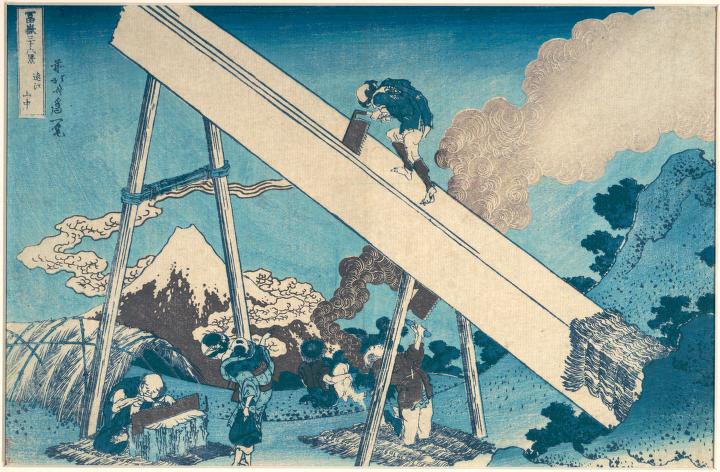Thanks for all the interest and encouragement - it really does help!
Back to the stack of old bed slats.
These are about four foot long, 3 1/4" wide and 9/16" thick. I now know (from my full-sized drawing) that I need strips of around 12" long and 1 1/2" wide, to make the rails and runners. I want them to be only 3/8" thick, and I'm planning to use stub tenons to join the runners (which support the drawers) to the rails (which span the cabinet from side to side).
That sounds ok in theory and looks ok in a drawing but I've not actually made anything this small and fiddly before, and want to be sure before I spend ages getting it wrong, so decided to do an experiment first.
So here's a slat in the vice, getting ripped into two strips. This worked, though I had to kneel on the floor to do it, which is not so good.
Here it is on edge on the bench, getting one long face edge
This project throws up some interesting workholding challenges, especially as many of the pieces are quite small. To hold this wood on its edge for planing, I used this simple plywood device, which I think I probably saw on here first - so thanks if you posted it. In my case it fits over the bench stop and is helped with a holdfast. The wedge holds well and is quick and easy, just needing a tap from a mallet.
For this first strip, I planed the thickness with the wood all in one long bit, using the same device, but without the wedge:
I had thought that keeping this part in one length would make workholding easier, but in this case it just made it more awkward.
Anyhow, with a thin piece ready for an experiment I could try making a mortice at one end and fitting a stub tenon into it.
I marked the width of the tenon and planed down with a Record 405 as a plough, to make a sloping cut:
which I then deepened to a square ended mortice with a matching 1/8" chisel
- not at all tidy! That won't do.
However, with a tenon sawn on the end of another piece, they do at least go together
Thinking about it further, the obvious technique is to plough the grooves all the way along. I don't need a groove - I'm not fitting dustboards - but I think that having the groove is no disadvantage. As Jacob often reminds us, the best way to answer design questions like this is to look at old work, which I did. There are three examples of Victorian hand made drawers available in our house - but they all have dustboards!
So I went back to the test piece and ploughed the groove all the way along.
I think these will be ok looking like this:
So, the experiment confirmed that my plan was ok with the proportions of 3/8" thickness and a groove 1/8" x 1/8".
It was time for some more planing. Having switched to working on pieces only about a foot long,
I needed to work out efficient ways of holding them, on a bench with no tail vice.
I have some dog holes and a Veritas surface vice - but it's designed for thicker timber, over 1/2" thick, not under.
It was ok with a bit of plywood in between,
but it still gets in the way of the plane, so I settled on a simpler system instead.
It's just a holdfast, a scrap of ply, a wedge and a wooden bench dog. The ply is only 1/4" but is stiff enough. The wedge is nice and quick, so I can check progress or turn the wood round easily.
I soon got into a routine. Gauge 1/8th from the flat side, take thick shavings off with a wooden Jack plane, then switch to a medium thickness shaving with a 5 1/2, and finish up with a no 4. Gauge to 3/8" and repeat.
The wooden Jack took really quite thick shavings:
.
I did have to keep stopping, to sweep up:
and to re-sharpen. Let's not get distracted into sharpening, but thicknessing oak does go a lot better with sharp edges :wink:.
So, after quite a few hours, I had got into a nice working routine and could plane down a piece in about ten minutes. I successfully turned some of this
into this
.
And yes, that is a table saw the bits are standing on. I don't need it on this project, but will be using my little bandsaw where it makes sense to do so. I like using hand tools but don't have any dogmatic objection to power tools, where appropriate. The hand planing has been quite a nice work-out and might even help get me fitter if I do enough of it. Sometimes "the hard way" is easier overall; sometimes it's not.
After several days of preparation, I am getting closer to the point where I can start to cut joints, but am not quite there yet. All this time, I am still mulling over the details of dimensions, joints and choices of materials. I know that I am very fortunate having the time and opportunity to do this the way I please, without having to worry about making a profit on the job or satisfying anyone other than myself. More of the same will follow soon!



























































































